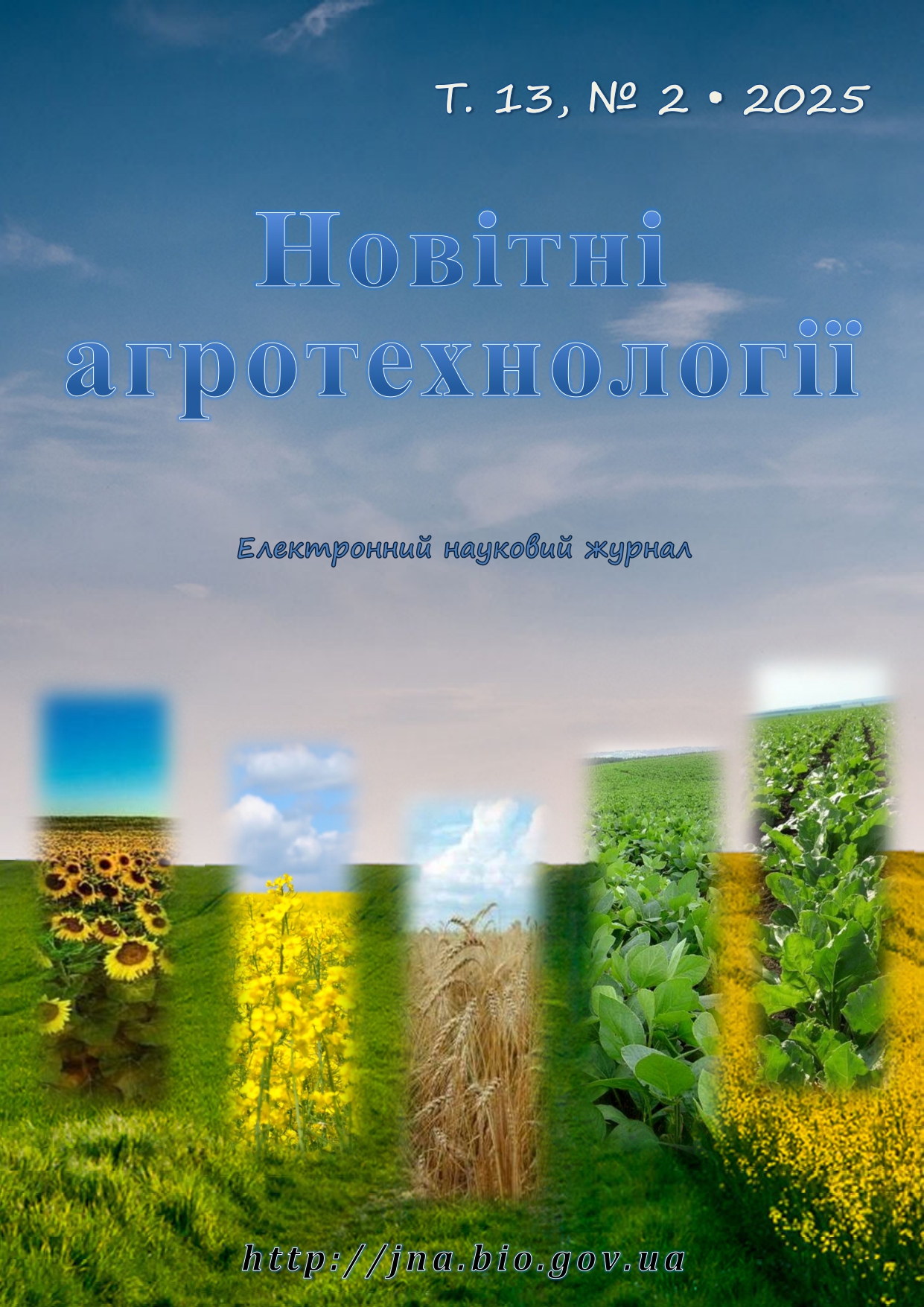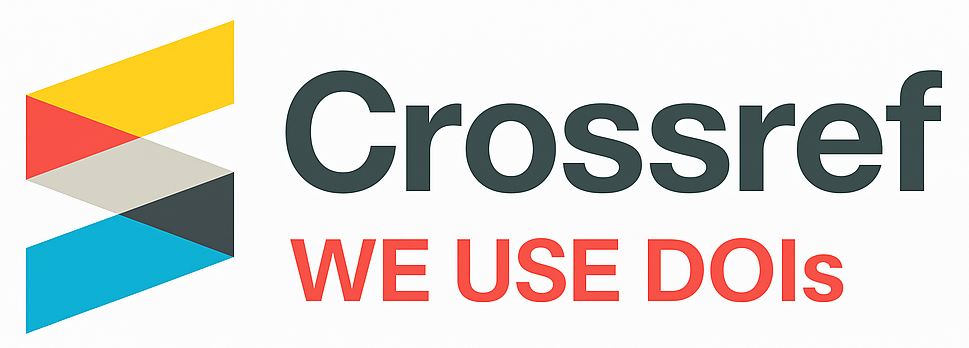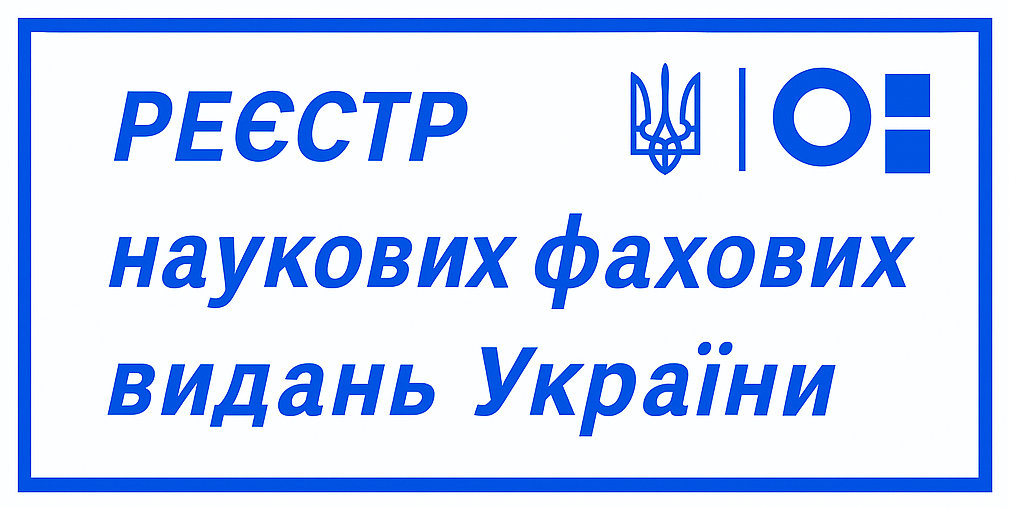Удосконалена технологія вирощування міскантусу гігантського у смугових насадженнях: вплив на елементи продуктивності, врожайність та якість біомаси
DOI:
https://doi.org/10.47414/na.13.2.2025.339605Ключові слова:
міскантус гігантський, кукурудза звичайна, люпин жовтий, вид насадження, підживлення, біометричні показники, врожайність, кореляція, біомасаАнотація
Мета. Установити особливості формування врожайності та якості біомаси міскантусу гігантського залежно від удосконалення технології вирощування культури у смугових насадженнях з кукурудзою звичайною та люпином багаторічним. Методи. Дослідження проводили на чорноземах опідзолених середньогумусних на рослинах третього-п’ятого років вегетації впродовж 2020–2024 рр. в умовах центральної частини лівобережного Лісостепу України. При цьому користувалися методикою дослідної справи в агрономії та дотримувались затверджених методик та наукових рекомендацій. Експеримент проведено за схемою трифакторного польового досліду: фактор А (рік вегетації): третій, четвертий, п’ятий; фактор Б (вид насадження): мононасадження і смугові насадження міскантусу в посівах кукурудзи та люпину; фактор В (позакореневе підживлення): вар. 1 – без підживлення (контроль), вар. 2 – підживлення Кристалон + Біопрепарат (25 %-ва доза кожного препарату), вар. 3 – підживлення Кристалон + Біопрепарат (50 %-ва доза кожного препарату), вар. 4 – підживлення Кристалон (повна доза 100 %), вар. 5 – підживлення Біопрепарат (повна доза 100 %). Результати. Вид насадження та підживлення мають істотний вплив на збільшення біометричних показників рослин міскантусу гігантського (висоти та густоти стеблостою, а також площі листкової пластики). Ці показники були істотно вищими у смугових насадженнях порівняно з мононасадженнями та мали середній або сильний прямолінійний кореляційний зв’язок з урожайністю біомаси міскантусу. Щорічне застосування у підживленні препаратів Кристалон і Мікофренд С (50 % доза кожного препарату) у смугових насадженнях міскантусу має істотний вплив на збільшення врожайності основної культури – міскантусу гігантського (до 22,2 т/га). При цьому зростає загальний обсяг біомаси смугових насаджень (до 29,7 т/га) з урахуванням врожаю біомаси супутнього компонента – кукурудзи (до 7,3 т/га). Висновки. Гарантоване зростання біометричних показників рослин і підвищення врожайності та поліпшення якості біомаси міскантусу гігантського й кукурудзи (до 27,8 т/га) як сировини для біопалива, забезпечується за вирощування культур у смугових насадженнях з люпином та застосування щорічного сумісного підживлення 50 % дозою кожного з препаратів – Кристалон і Мікофренд С.
Посилання
Fustec, J., Lesuffleur, F., Mahieu, S., & Cliquet, J.-B. (2010). Nitrogen rhizodeposition of legumes. A review. Agronomy for Sustainable Development, 30(1), 57–66. https://doi.org/10.1051/agro/2009003
Thilakarathna, M. S., McElroy, M. S., Chapagain, T., Papadopoulos, Y. A., & Raizada, M. N. (2016). Belowground nitrogen transfer from legumes to non-legumes under managed herbaceous cropping systems. A review. Agronomy for Sustainable Development, 36(4), Article 58. https://doi.org/10.1007/s13593-016-0396-4
Abi-Ghanem, R., Carpenter-Boggs, L., & Smith, J. L. (2010). Cultivar effects on nitrogen fixation in peas and lentils. Biology and Fertility of Soils, 47(1), 115–120. https://doi.org/10.1007/s00374-010-0492-6
Pelzer, E., Bazot, M., Makowski, D., Corre-Hellou, G., Naudin, C., Al Rifaï, M., Baranger, E., Bedoussac, L., Biarnès, V., Boucheny, P., Carrouée, B., Dorvillez, D., Foissy, D., Gaillard, B., Guichard, L., Mansard, M.-C., Omon, B., Prieur, L., Yvergniaux, M., … Jeuffroy, M.-H. (2012). Pea–wheat intercrops in low-input conditions combine high economic performances and low environmental impacts. European Journal of Agronomy, 40, 39–53. https://doi.org/10.1016/j.eja.2012.01.010
Bacchi, M., Monti, M., Calvi, A., Lo Presti, E., Pellicanò, A., & Preiti, G. (2021). Forage Potential of Cereal/Legume Intercrops: Agronomic Performances, Yield, Quality Forage and LER in Two Harvesting Times in a Mediterranean Environment. Agronomy, 11(1), Article 121. https://doi.org/10.3390/agronomy11010121
Jensen, E. S., Carlsson, G., & Hauggaard-Nielsen, H. (2020). Intercropping of grain legumes and cereals improves the use of soil N resources and reduces the requirement for synthetic fertilizer N: A global-scale analysis. Agronomy for Sustainable Development, 40(1), Article 5. https://doi.org/10.1007/s13593-020-0607-x
Hauggaard-Nielsen, H., & Jensen, E. S. (2005). Facilitative Root Interactions in Intercrops. Plant and Soil, 274(1–2), 237–250. https://doi.org/10.1007/s11104-004-1305-1
Hauggaard-Nielsen, H., Andersen, M. K., Jørnsgaard, B., & Jensen, E. S. (2006). Density and relative frequency effects on competitive interactions and resource use in pea–barley intercrops. Field Crops Research, 95(2–3), 256–267. https://doi.org/10.1016/j.fcr.2005.03.003
Lithourgidis, A. S., Dordas, C. A., Damalas, C. A., & Vlachosterios, D. N. (2011). Annual intercrops: An alternative pathway for sustainable agriculture. Australian Journal of Crop Science, 5, 396–410.
Bedoussac, L., Journet, E.-P., Hauggaard-Nielsen, H., Naudin, C., Corre-Hellou, G., Jensen, E. S., Prieur, L., & Justes, E. (2015). Ecological principles underlying the increase of productivity achieved by cereal-grain legume intercrops in organic farming. A review. Agronomy for Sustainable Development, 35(3), 911–935. https://doi.org/10.1007/s13593-014-0277-7
Vályi-Nagy, M., Rácz, A., Irmes, K., Szentpéteri, L., Tar, M., Kassai, K. M., & Kristó, I. (2023). Evaluation of the Development Process of Winter Wheat (Triticum aestivum L.) and Winter Pea (Pisum sativum L.) in Intercropping by Yield Components. Agronomy, 13(5), Article 1323. https://doi.org/10.3390/agronomy13051323
Pankou, C., Lithourgidis, A., & Dordas, C. (2021). Use of intercropping for a better resource use efficiency in a Mediterranean climate. Aspects of Applied Biology, 146, 1–7.
Fujita, K., Ofosu-Budu, K. G., & Ogata, S. (1992). Biological nitrogen fixation in mixed legume-cereal cropping systems. Plant and Soil, 141(1–2), 155–175. https://doi.org/10.1007/bf00011315
Willey, R. W. (1990). Resource use in intercropping systems. Agricultural Water Management, 17(1–3), 215–231. https://doi.org/10.1016/0378-3774(90)90069-b
Corre-Hellou, G., Fustec, J., & Crozat, Y. (2006). Interspecific Competition for Soil N and its Interaction with N2 Fixation, Leaf Expansion and Crop Growth in Pea–Barley Intercrops. Plant and Soil, 282(1–2), 195–208. https://doi.org/10.1007/s11104-005-5777-4
Bedoussac, L., & Justes, E. (2011). A comparison of commonly used indices for evaluating species interactions and intercrop efficiency: Application to durum wheat–winter pea intercrops. Field Crops Research, 124(1), 25–36. https://doi.org/10.1016/j.fcr.2011.05.025
Kherif, O., Seghouani, M., Zemmouri, B., Bouhenache, A., Keskes, M., Yacer-Nazih, R., Ouaret, W., & Latati, M. (2021). Understanding the Response of Wheat-Chickpea Intercropping to Nitrogen Fertilization Using Agro-Ecological Competitive Indices under Contrasting Pedoclimatic Conditions. Agronomy, 11(6), Article 1225. https://doi.org/10.3390/agronomy11061225
Binary crops of forage grasses in 2025. (2025). https://agroexp.com.ua/uk/binarnye-posevy-dlya-kormovyh-trav [ In Ukrainian]
Dudka, M. I. (2014). Forage productivity of early spring agrophytocenoses depending on species composition when grown for green fodder in the Northern Steppe. Bulletin of the Institute of Agriculture of the Steppe Zone of NAAS of Ukraine, 7, 84–89. [In Ukrainian]
Dugassa, M. (2023). The role of cereal–legume intercropping in soil fertility management: Review. Journal of Agriculture and Aquaculture, 5(1). https://escientificpublishers.com/the-role-of-cereal-legume-intercropping-in-soil-fertility-management-review-JAA-05-0058
Brooker, R. W., Bennett, A. E., Cong, W., Daniell, T. J., George, T. S., Hallett, P. D., Hawes, C., Iannetta, P. P. M., Jones, H. G., Karley, A. J., Li, L., McKenzie, B. M., Pakeman, R. J., Paterson, E., Schöb, C., Shen, J., Squire, G., Watson, C. A., Zhang, C., … White, P. J. (2014). Improving intercropping: a synthesis of research in agronomy, plant physiology and ecology. New Phytologist, 206(1), 107–117. https://doi.org/10.1111/nph.13132
Li, L., Zhang, L.-Z., & Zhang, F.-Z. (2013). Crop mixtures and the mechanisms of overyielding. In S. A. Levin (Ed.), Encyclopedia of biodiversity (2nd ed., Vol. 2, pp. 382–395). Academic Press. https://doi.org/10.1016/b978-0-12-384719-5.00363-4
White, P. J., George, T. S., Gregory, P. J., Bengough, A. G., Hallett, P. D., & McKenzie, B. M. (2013). Matching roots to their environment. Annals of Botany, 112(2), 207–222. https://doi.org/10.1093/aob/mct123
Van Der Heijden, M. G. A., & Horton, T. R. (2009). Socialism in soil? The importance of mycorrhizal fungal networks for facilitation in natural ecosystems. Journal of Ecology, 97(6), 1139–1150. https://doi.org/10.1111/j.1365-2745.2009.01570.x
Stępień, W., Górska, E. B., Pietkiewicz, S., & Kalaji, M. H. (2014). Long-term mineral fertilization impact on chemical and microbiological properties of soil and Miscanthus × giganteus yield. Plant, Soil and Environment, 60(3), 117–122. https://doi.org/10.17221/890/2013-pse
Taranenko, A., Taranenko, S., Kulyk, M., Rytchenko, A., & Teteriuk, R. (2025). Assessment of the soil microbial community under energy crops (Panicum virgatum L. and Miscanthus giganteus): a case study from Ukraine. Soil Science Annual, 76(1), 1–8. https://doi.org/10.37501/soilsa/199764
Dymytrоv, S. H., & Sabluk, V. T. (2021). Increase in dry biomass accumulation of cereal bioenergy crops under root system mycorrhization. Bulletin of Sumy National Agrarian University. Series “Agronomy and Biology”, 4, 3–8. [In Ukrainian]
Korenko, M., Bulgakov, V., Kurylo, V., Kulyk, M., Kainichanko, A., Ihnatiev, Y., & Matušeková, E. (2021). Formation of Crop Yields of Energy Crops Depending on the Soil and Weather Conditions. Acta Technologica Agriculturae, 24(1), 41–47. https://doi.org/10.2478/ata-2021-0007
Drazic, G., Milovanovic, J., Ikanovic, J., & Petric, I. (2017). Influence of fertilization on Miscanthus × giganteus (Greef et Deu) yield and biomass traits in three experiments in Serbia. Plant, Soil and Environment, 63(4), 189–193. https://doi.org/10.17221/156/2017-pse
Semenchuk, V., Olifirovych, V., & Sanduliak, T. (2021). Growing miscanthus gigantic as a raw material for the production of solid fuels on the sloping land of the South-West Forest-Steppe. Bulletin of Agricultural Science, 10, 45–50. https://doi.org/10.31073/agrovisnyk202110-06 [In Ukrainian]
Karbivska, U. M., & Sitnyk, A. A. (2024). Productivity of miscanthus depending agricultural technology elements in sod-podzolic soil conditions оn the Precarpathian region. Taurian Scientific Herald, 137, 111–116. https://doi.org/10.32782/2226-0099.2024.137.14 [In Ukrainian]
Rozhkov, A. O., Puzik, V. K., Kalenska, S. M., Puzik, L. M., Popov, S. I., Muzafarov, N. M., Bukhalo, V. Ya., & Kryshtop, E. A. (2016). Research work in agronomy. Book 1: Theoretical aspects of the research case. A. O. Rozhkov (Ed.). Maidan. https://repo.btu.kharkov.ua//handle/123456789/33532 [In Ukrainian]
Rozhkov, A. O., Puzik, V. K., Kalenska, S. M., Puzik, L. M., Popov, S. I., Muzafarov, N. M., Bukhalo, V. Ya., & Kryshtop, Ye. A. (2016). Research work in agronomy. Book 2: Statistical processing of research results. A. O. Rozhkov (Ed.). Maidan. https://repo.btu.kharkov.ua//handle/123456789/33533 [In Ukrainian]
Lebid, Ye. M., Tsykov, V. S., & Pashchenko, Yu. M. (2008). Methodology of conducting field experiments with maize. Dnipropetrovsk. [In Ukrainian]
Rakhmetov, D. B., Kalenska, S. M., Fedorchuk, M. I., Rakhmetov, S. D., Kokovikhin, S. V., Fedorchuk, Ye. M., Fedorchuk, V. H., & Polyvoda, O. M. (2017). Methodological recommendations for optimizing the technology of growing miscanthus in different soil and climatic zones of Ukraine. Vydavnychyi tsentr “Kolos”. [In Ukrainian]
Ermantraut, E. R., Prysiazhniuk, O. I., & Shevchenko, I. L. (2007). Statistical analysis of agronomic research data in the Statistica 6.0 package. PolihrafKonsaltynh. [In Ukrainian]
##submission.downloads##
Опубліковано
Як цитувати
Номер
Розділ
Ліцензія
Авторське право (c) 2025 Р. С. Тетерюк, М. І. Кулик

Ця робота ліцензується відповідно до Creative Commons Attribution-ShareAlike 4.0 International License.
"Новітні агротехнології" дотримується авторських прав та дозволів CREATIVE COMMONS для журналів із відкритим доступом.
Автори, які публікуються в цьому журналі, погоджуються з такими умовами:
- автори лишають за собою право на авторство своєї роботи та передають журналу право першої публікації цієї роботи на умовах ліцензії Creative Commons Attribution-ShareAlike 4.0 International License, яка дає змогу іншим особам вільно поширювати опубліковане дослідження з обов'язковим посиланням на авторів оригінальної роботи та першу публікацію роботи в цьому журналі;
- автори мають право укладати самостійні додаткові угоди щодо неексклюзивного розповсюдження роботи такою, якою її було опубліковано цим журналом (наприклад, розміщувати роботу в електронному сховищі установи або публікувати у складі монографії), за умови збереження посилання на першу публікацію роботи в цьому журналі.








